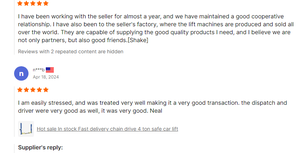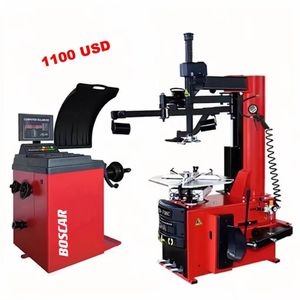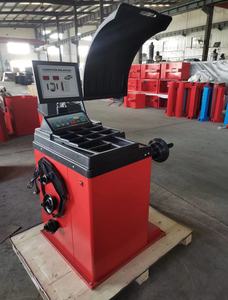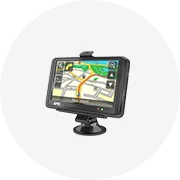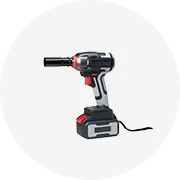Types of Wheel Balancing Machines
Wheel balancing machines are essential automotive equipment used to measure and correct imbalances in vehicle wheels. Proper wheel balancing prevents vibrations that can lead to premature tire wear, suspension damage, and decreased ride comfort. Understanding the different types available helps in selecting the right machine for specific applications.
Static Wheel Balancing Machines
These are the simplest form of balancing devices, consisting of a horizontal axis where the wheel is mounted. When rotated, indicators show points of imbalance in a single plane.
Best for: Two-wheeled vehicles, small workshops, basic applications
Limitations: Less accurate than other types, limited to single-plane balancing
Dynamic Wheel Balancing Machines
More sophisticated than static balancers, these machines measure imbalance in two planes: vertical and horizontal. This allows for placement of weights on both sides of the wheel for optimal balance.
Best for: Passenger cars, commercial vehicles, sports cars
Advantages: Higher accuracy, dual-plane balancing, versatile application
Computerized Wheel Balancing Machines
These advanced machines feature built-in computer systems that automatically determine weight placement needs. They offer exceptional accuracy and can store previous balancing data.
Best for: Professional service stations, all vehicle types from small cars to trucks
Features: Automated calculations, data storage, high precision
Touchless Wheel Balancing Machines
Using laser or ultrasonic technologies, these machines measure imbalance without physical contact with the wheel surface, preventing potential damage to expensive or decorative wheels.
Best for: Premium service stations, vehicles with expensive custom wheels
Benefits: Non-contact measurement, preservation of wheel aesthetics
Portable Wheel Balancing Machines
Compact and easily transportable, these machines are designed for mobile services or workshops with space limitations. Despite their size, they can provide accurate balancing results.
Best for: Mobile mechanics, small garages, on-site services
Tradeoff: Portability vs. some advanced features
| Machine Type | Accuracy Level | Best Application | Price Range | Key Features |
|---|---|---|---|---|
| Static | Basic | Motorcycles, light vehicles | Low | Simple operation, single-plane balancing |
| Dynamic | High | Cars, light trucks | Medium | Dual-plane balancing, higher precision |
| Computerized | Very High | All vehicle types | High | Automated calculations, data storage |
| Touchless | Premium | Luxury/custom wheels | Very High | Non-contact measurement, wheel protection |
| Portable | Moderate to High | Mobile services | Medium | Compact design, transportability |
Industry Insight: The trend in wheel balancing technology is moving toward fully automated, AI-assisted systems that can detect not only imbalance but also other wheel and tire issues such as runout problems and potential structural defects.
Specifications and Technical Details
When evaluating wheel balancing machines, understanding the technical specifications is crucial for determining compatibility with your operational needs. The following key specifications determine a machine's capability, accuracy, and suitability for specific applications.
Size and Dimensions
Workshop space considerations are essential when selecting a balancing machine. Standard dimensions typically include:
- Length: approximately 1100 mm
- Height: approximately 1250 mm
- Width: approximately 1200 mm
- Weight: approximately 250 kg
Space-saving tip: Consider fold-up hood designs for workshops with limited floor space
Accuracy and Precision
The accuracy of a wheel balancing machine directly impacts the quality of service provided:
- Measurement error limit: Less than 1g
- Rotation speed error: Less than 1 r/min
- External wheel diameter measurement: 610-1050 mm
- Tire width measurement: 150-400 mm
Precision factor: Higher-end machines can achieve accuracy of ±0.5g
Capacity and Size Range
The machine must accommodate the wheel sizes commonly serviced in your facility:
- Wheel diameter range: 10-30 inches
- Maximum wheel weight: 70 kg
- Rim width accommodation: Up to 20 inches (for standard models)
Application note: Heavy-duty models can handle wheels up to 200 kg for commercial vehicles
Power Requirements
Understanding electrical specifications ensures proper installation and operation:
- Power consumption: Approximately 0.25 kW
- Electrical frequency: 50 Hz
- Power supply: 220V (standard models)
- Phase requirements: Single-phase for most models; three-phase for industrial versions
Energy efficiency: Modern machines often include energy-saving modes
| Specification | Standard Range | Premium Range | Impact on Performance |
|---|---|---|---|
| Balancing Speed | 150-200 RPM | 70-100 RPM | Lower speeds offer higher accuracy but longer cycle time |
| Balancing Accuracy | ±1g | ±0.5g | Higher accuracy reduces chances of residual vibration |
| Display Type | LED/LCD | Touchscreen | Affects ease of use and available features |
| Calibration Interval | Monthly | Self-calibrating | Affects maintenance requirements and ongoing accuracy |
| Balancing Modes | 2-3 modes | 5+ specialized modes | More modes allow optimization for different wheel types |
Maintenance Requirements
Proper maintenance is essential for ensuring the longevity, accuracy, and reliability of wheel balancing machines. A well-maintained machine provides consistent results and minimizes downtime. Below are the key maintenance practices recommended for optimal performance.
Regular Cleaning
Keeping the machine clean prevents accuracy issues and extends component life:
- Clean exterior surfaces with a soft cloth and mild cleaning solution
- Remove accumulated debris from internal components
- Clean mounting adapters and cones after each use
- Inspect shaft for dirt or damage weekly
Frequency: Daily exterior wipe-down; weekly thorough cleaning
Calibration Procedures
Regular calibration ensures the machine maintains its accuracy over time:
- Perform basic calibration checks monthly
- Use manufacturer-provided calibration weights
- Verify balance settings against manufacturer specifications
- Document calibration results for quality control
Best practice: Schedule professional calibration annually
Wear and Tear Inspection
Regular component checks prevent unexpected failures:
- Inspect drive belts for cracks, fraying, or stretching
- Check bearings for smooth operation and unusual noise
- Examine electrical connections for secure fit
- Verify that mounting hardware remains tight
- Replace worn components immediately
Inspection interval: Bi-weekly visual inspection; quarterly thorough check
Lubrication Requirements
Proper lubrication reduces friction and extends component life:
- Apply manufacturer-recommended lubricants only
- Lubricate shaft bearings according to usage frequency
- Maintain proper lubrication of moving mechanical parts
- Avoid over-lubrication which can attract contaminants
Schedule: Monthly for high-volume shops; quarterly for lower usage
Software Updates
Keeping software current ensures optimal performance and access to new features:
- Register your machine with the manufacturer
- Check for available updates quarterly
- Follow manufacturer instructions for update installation
- Back up machine settings before updates
Update source: Only use official manufacturer software
Important: Never attempt to repair electrical components or modify the machine's safety features. These actions can create hazardous conditions and void manufacturer warranties. Always consult with authorized service technicians for complex repairs.
Maintenance Tracking Tip: Create a maintenance log to track all cleaning, calibration, and service activities. This documentation helps identify patterns of wear, ensures regular maintenance is performed, and provides valuable information for technicians during service visits.
How to Choose a Wheel Balancing Machine
Selecting the right wheel balancing machine is a critical decision that impacts operational efficiency, service quality, and business profitability. Consider these important factors to make an informed choice that meets your specific requirements.
Business Requirements
Match the machine to your business model and customer base:
- Consider the types of vehicles you primarily service
- Assess your current and future volume requirements
- Analyze the wheel types commonly encountered (standard, alloy, custom)
Strategic approach: Choose equipment that can grow with your business
Capacity and Size Compatibility
Ensure the machine can handle your typical wheel specifications:
- Maximum wheel diameter capability
- Maximum wheel width accommodation
- Weight capacity for heavier wheels
- Specialized adapters for non-standard wheels
Sizing tip: Add 20% to your current largest wheel size for future-proofing
Type Selection: Automatic vs. Manual
Consider operation style based on workflow and technician expertise:
- Automatic: Faster operation, higher precision, less technician input required
- Manual: Lower cost, more control for experienced technicians, simpler maintenance
Efficiency factor: Automatic machines can reduce balancing time by up to 40%
Precision and Accuracy
Evaluate the level of precision required for your service standards:
- Consider the minimum weight detection capability
- Review the machine's repeatability specifications
- Assess measurement technology (laser, sensor quality)
Quality indicator: Higher precision machines reduce comebacks and improve customer satisfaction
Ease of Operation
Consider your staff's technical expertise and training requirements:
- Evaluate interface design and intuitiveness
- Consider display quality and visibility
- Assess the availability of visual guidance features
- Review training resources provided by the manufacturer
Productivity impact: User-friendly machines reduce training time and operator errors
Space and Portability
Analyze your workspace constraints and mobility needs:
- Measure your available floor space
- Consider ceiling height for hood clearance
- Evaluate if portability is required for your services
- Check power source availability at installation location
Layout consideration: Allow at least 3 feet of clearance around the machine for operator movement
Safety Features
Prioritize operator and equipment protection:
- Verify emergency stop functionality
- Check for wheel guard/protective hood
- Review automatic brake systems
- Assess electrical safety certifications
Compliance note: Ensure the machine meets workplace safety regulations
Price and Warranty
Balance initial investment against long-term value:
- Compare purchase price against operational features
- Evaluate warranty coverage period and terms
- Consider availability and cost of replacement parts
- Factor in service contract options
Investment strategy: Calculate ROI based on expected service volume and pricing
| Business Type | Recommended Machine Type | Key Features to Prioritize |
|---|---|---|
| Small Independent Garage | Basic Computerized | Ease of use, reliability, moderate capacity |
| Tire Specialty Shop | Advanced Computerized | High throughput, multiple balancing modes, large wheel capacity |
| Luxury/Performance Shop | Premium Touchless | Non-contact measurement, high precision, wheel protection |
| Mobile Service Provider | Portable Computerized | Compact size, battery option, durability, quick setup |
| Commercial/Fleet Service | Heavy-Duty Dynamic | High weight capacity, durability, efficiency |
Selection Advice: Before making a final decision, request a demonstration or trial period if possible. This hands-on experience provides invaluable insight into the machine's operation, accuracy, and compatibility with your specific needs.
DIY Maintenance and Replacement Guidelines
While professional servicing is recommended for major repairs, there are several maintenance tasks that users can safely perform themselves. These DIY procedures help maintain accuracy and extend the lifespan of wheel balancing equipment.
Safety Notice: Always disconnect power before performing any maintenance. Never disassemble components not specified in the user manual. For complex issues or internal component failures, contact an authorized service technician.
Cleaning Procedures
Regular cleaning prevents accuracy issues and extends component life:
- Disconnect power before beginning any cleaning
- Use a soft, lint-free cloth slightly dampened with mild cleaner
- Avoid spraying liquids directly onto the machine
- Pay special attention to the main shaft and mounting adapters
- Remove debris from weight tray compartments
- Clean display screen with appropriate electronic screen cleaner
- Ensure all components are completely dry before reconnecting power
Important: Never use abrasive cleaners or solvents that could damage plastic components or displays
Leveling and Stability
Proper leveling ensures accurate measurements and safe operation:
- Place a bubble level on the machine base plate
- Check level in both front-to-back and side-to-side directions
- Adjust the leveling feet until the bubble is centered
- Tighten lock nuts on adjustable feet to secure position
- Verify stability by gently pushing on the machine (it should not rock)
- Re-check level after any machine relocation
Pro tip: Mark floor position with tape to ensure consistent placement if machine must be moved for cleaning
Basic Calibration
User-level calibration maintains accuracy between professional service visits:
- Consult the user manual for your specific model's calibration procedure
- Obtain a properly balanced wheel or calibration weight
- Enter the calibration mode according to manufacturer instructions
- Follow the on-screen prompts to complete the calibration sequence
- Verify calibration by balancing a known wheel
- Document calibration date and results
Frequency recommendation: Perform basic calibration monthly or after any machine relocation
| Maintenance Task | Frequency | DIY Difficulty | Tools Required |
|---|---|---|---|
| External cleaning | Daily/Weekly | Easy | Soft cloth, mild cleaner |
| Adapter/Cone cleaning | After each use | Easy | Soft brush, cloth |
| Machine leveling | Monthly | Easy | Bubble level, wrench |
| Basic calibration | Monthly | Moderate | Calibration weight |
| Software update | As released | Moderate | USB drive, computer |
Maintenance Schedule Tip: Create a maintenance calendar with all required tasks and their frequencies. Assign responsibility to specific staff members and implement a sign-off system to ensure consistent maintenance performance.
Frequently Asked Questions
Wheel balancing should typically be performed every 5,000 to 7,500 miles as part of regular maintenance. However, it's also recommended during these specific situations:
- When new tires are installed
- When tires are rotated
- After hitting significant potholes or curbs
- When experiencing vibrations in the steering wheel, seat, or floorboard
- After tire repairs or patches
For vehicles driven primarily on rough roads, more frequent balancing may be necessary to maintain optimal performance and tire life.
Unbalanced wheels often present several noticeable symptoms:
- Vibrations: Felt in the steering wheel (front wheel imbalance) or seat/floorboard (rear wheel imbalance)
- Uneven tire wear: Spotty or scalloped wear patterns on tire tread
- Vehicle pulling: Car drifts to one side when driving on a straight, level road
- Visual issues: Wheel appears to wobble or bounce during rotation
- Performance changes: Reduced fuel efficiency or handling precision
These symptoms typically become more pronounced at higher speeds, often becoming most noticeable between 50-70 mph.
Yes, prolonged operation with unbalanced wheels can cause significant damage to multiple vehicle components:
- Tire damage: Premature and uneven wear, reducing tire lifespan by up to 30%
- Suspension damage: Excessive stress on shock absorbers, struts, and ball joints
- Bearing wear: Accelerated deterioration of wheel bearings and hub assemblies
- Steering components: Increased wear on tie rods, steering rack, and other precision components
- Fuel efficiency: Reduction in MPG due to increased rolling resistance
In severe cases, extended driving with severely unbalanced wheels can lead to catastrophic component failure and safety hazards.
No, wheel alignment and wheel balancing are distinctly different services that address separate aspects of wheel performance:
Wheel Alignment:
- Adjusts the angles of the wheels relative to each other and to the road surface
- Corrects the direction that tires point when installed on the vehicle
- Involves adjusting suspension components that determine wheel position
- Addresses issues like pulling, uneven tire wear, and improper steering wheel position
Wheel Balancing:
- Equalizes the weight distribution around the wheel and tire assembly
- Involves adding small weights to offset imbalances in the rotating assembly
- Addresses vibration issues and promotes even tire wear
- Does not affect the directional positioning of the wheels
Both services are important for optimal vehicle performance and should be performed as part of regular maintenance.
While professional wheel balancing using specialized equipment is always recommended, there are limited DIY approaches that can provide temporary improvements:
- Road force balancing: Driving at varied speeds to identify vibration patterns (diagnostic only)
- Basic static balancing: Using simple homemade balancers for motorcycle or bicycle wheels
- Balance beads: Adding internal balancing media for off-road applications
Important limitations:
- DIY methods typically achieve only rough balancing
- Most cannot address complex dynamic imbalance issues
- Insufficient for high-speed driving or performance applications
- May void tire warranties if damage occurs
For safety and optimal performance, professional balancing with calibrated equipment remains the recommended approach for all automotive applications.



